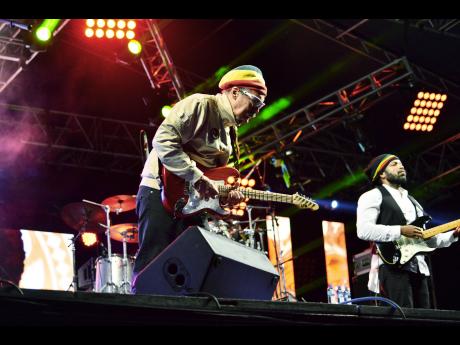When musicians play together
Last week's column was about musicians having an identity outside of being the 'so-and-so guitarist' (or keyboard player, or musical director, or 'bassie'). However, there are those players of instruments who, collectively, have an identity as a self-contained band, and when they perform, tend to consistently make sure that they announce the members' individual identity by calling their names.
This set-up goes a long way towards giving musicians an identity within the collective - and also make music that they own, not only play tracks for hire, as lucrative as that may be at some points. For artistes can be fickle creatures, changing out their musicians on a whim and exercising new, unexpected 'boss man' or 'boss woman' powers.
Unfortunately, though, in Jamaica, the bands are woefully thin on the ground for a country that has produced so many musicians, formally trained as well as learning through the informal - but strikingly effective - informal apprenticeship system. For a country that produced (and still harps on) the Skatalites, we have done a very poor job of producing and sustaining self-contained units.
Among the older self-contained set-ups are Inner Circle (based in Miami), Third World, and Fab Five, the last being the show band of the trio that can play a mixture of its own material and popular songs from various genres to keep the crowd on the dance floor. Errol Lee and the Bare Essentials and Unique Vision are in the same vein, with 50/50 having its audience as well (though not seeming to play as often).
With no disrespect to anyone, if we leap forward, there is Raging Fyah, Rootz Underground, Uprising Roots, C-Sharp (whose Reggae My Song and take on Book of Rules I have been particularly fond of), Pentateuch being another self-contained band that has come out of the Edna Manley College for the Visual and Performing Arts. Di Blueprint also comes to mind.
Of course, there are some I have left out, and the list is by no means exhaustive, or pretending to be even comprehensive. But if I were to try start naming solo performers, I would have multiple entries for each letter of the alphabet.
It is a woeful imbalance, but credit must be given to those musicians who choose to work together as a unit and go for a distinct identity.



